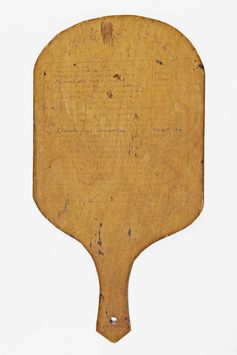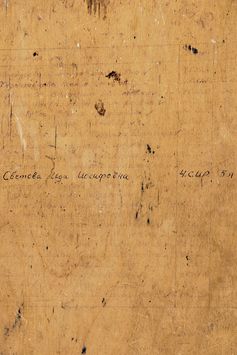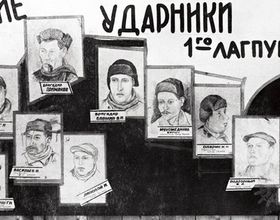

Production Plans and Work Quotas
Forced labour in the Gulag was subject to unrealistic targets defined by bureaucrats. The economic expectations placed on the Gulag were never fulfilled - or fulfilled only on paper.
The chief camp administration in Moscow specified the production targets. The circumstances prevailing in the camps were hardly taken into account. Since the camp commanders were held responsible for the non-fulfilment of the plans, they mercilessly goaded the inmates to work harder. The prospect of early release served as an incentive. The rations were doled out according to the fulfilment of the plans. Non-fulfilment led to life-threatening reductions in the amount of food an inmate received. One major way of getting around this problem was to feign high productivity.
How was a camp inmate's work quota documented?
Personal records notebook
A camp inmate's personal records book with entries on the fulfilment of the work quotas, Igarka, 1951
The first column was for entries on the degree of working plan fulfilment, the second for the number of working days performed. The third column shows the number of days added per quarter for overfulfilment of the quota. The additional days were subtracted from the term of imprisonment.
Source: "Memorial" Collection, Moscow
What conceptions of production plans and work quotas were conveyed by Soviet propaganda?
Examples of Soviet propaganda
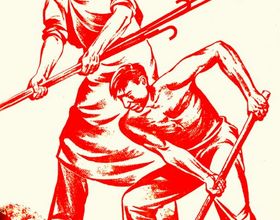
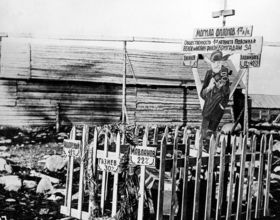
Ernst Friedrich Wirth talks about the falsification of work results
Interview with Ernst Friedrich Wirth
"The work was scamped to the utmost degree; the brigadier himself was interested in fulfilling his quota. I said the posts were to be driven down to the permafrost level, i.e. 4.5 to 6 metres deep - and ten per cent of the holes were inspected by the commissions. The remaining ones were naturally driven only 1.5 to 2 metres deep; then the posts were cut off and the wood sold or the like. I was in Vorkuta again in 1998 - I didn't see a single one of the houses we built there."
Interview with Ernst Friedrich Wirth, 2005
E. Wirth (b. 1932), arrested by the Soviet authorities in 1952 and committed to remand custody in Leipzig and Potsdam, sentenced to death, transport to Moscow, commutation of punishment to twenty years of forced labour in camps in the Vorkuta Region and elsewhere, released in 1956
Source: "Memorial" Collection, Germany

